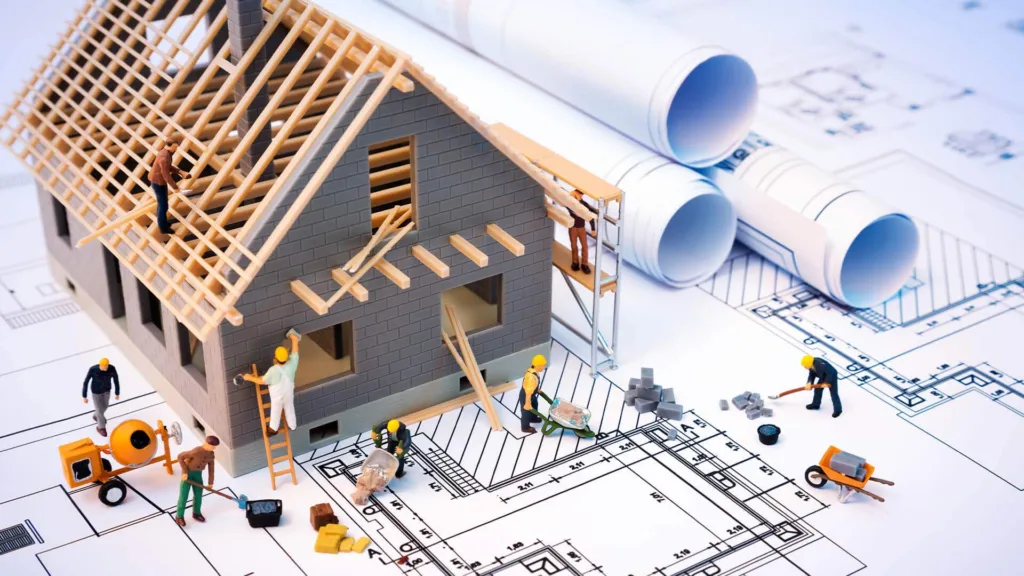
Table of Contents
Building Information Modeling (BIM), which offers a thorough and cooperative approach to construction projects, has emerged as a game-changer in the always changing fields of design and engineering. One of the key domains where BIM has showcased its transformative potential is in structural design and analysis. In this blog post, we will explore how Structural BIM is reshaping the way engineers and architects approach the planning, design, and analysis of structures.
Being Aware of Structural BIM
Defining Structural BIM
Before delving into its transformative effects, it’s essential to understand what Structural BIM entails. Unlike traditional 2D drafting methods, it involves creating a digital representation of a building’s physical and functional characteristics. This encompasses not only the architectural elements but also the structural components, allowing for a holistic view of the entire structure.
Collaborative Design and Integration
One of the hallmark features of Structural BIM is its emphasis on collaboration. Engineers, architects, and other stakeholders can work concurrently on the same model, fostering a more integrated and streamlined design process. This collaborative approach minimizes errors, enhances communication, and ultimately leads to more efficient structural design and analysis.
The Impact on Structural Design
Enhanced Visualization and Communication
Structural BIM facilitates a three-dimensional representation of the structure, offering a more realistic and detailed view than traditional 2D drawings. This enhanced visualization not only aids in better understanding but also improves communication among project stakeholders. It becomes easier to convey complex structural concepts to clients, builders, and even non-technical team members.
Iterative Design and Analysis
With the ability to make quick and dynamic changes in the digital model, BIM Structural supports an iterative design process. Engineers can easily experiment with different structural configurations, analyze their impact, and refine the design accordingly. This iterative approach leads to optimized structures, improved efficiency, and reduced design errors.
Clash Detection and Resolution
One of the groundbreaking features of Structural BIM is its clash detection capability. By simulating the entire construction process digitally, the software can identify potential clashes or conflicts between different building elements. This early detection enables engineers to address issues before they manifest on the construction site, saving both time and resources.
Streamlining Structural Analysis
Accurate Quantification and Material Management
Structural BIM goes beyond design aesthetics; it also plays a crucial role in accurate quantification and material management. The digital model contains information about the quantities of materials needed for construction, aiding in precise cost estimation and resource planning. This level of detail ensures that the project stays within budget and avoids unnecessary delays.
Performance Simulation and Analysis
Another transformative aspect of Structural BIM services is its ability to simulate the performance of a structure under various conditions. Engineers can conduct analyses related to structural integrity, load-bearing capacity, and even environmental factors. This level of in-depth analysis allows for the identification of potential weaknesses and the optimization of the structure for better performance and longevity.
Collaboration Across Disciplines
Interdisciplinary Coordination
In complex construction projects, collaboration across various disciplines is paramount. Structural BIM acts as a common platform where architects, structural engineers, MEP (Mechanical, Electrical, Plumbing) engineers, and other stakeholders can coordinate seamlessly. This interdisciplinary collaboration ensures that every aspect of the project is considered and integrated into the overall design.
Efficient Data Sharing and Accessibility
Structural BIM software allows for efficient data sharing and accessibility. Team members can access the model and relevant data from anywhere, promoting remote collaboration and reducing the constraints of physical location. This aspect is particularly beneficial in today’s globalized and remote-working environment.
Overcoming Challenges with Structural BIM
Initial Learning Curve
While the benefits of Structural BIM are evident, it is important to acknowledge the initial learning curve associated with adopting this technology. Engineers and architects may need time to familiarize themselves with the software and its features. However, the long-term advantages far outweigh the short-term challenges.
Data Standardization
Another challenge in the implementation of BIM Structural is the need for standardized data formats and protocols. Ensuring that all project stakeholders use compatible software and adhere to established standards is essential for smooth collaboration and data exchange.
Conclusion
In conclusion, Structural BIM services stand at the forefront of a revolution in structural design and analysis. Its ability to enhance visualization, promote collaboration, streamline analysis, and facilitate interdisciplinary coordination makes it an indispensable tool for modern construction projects. As the industry continues to embrace innovation, Structural BIM is poised to become the standard, transforming the way we conceive, design, and construct structures. Embracing this technology is not just an option; it’s a necessity for those who aim to stay at the forefront of the evolving field of structural engineering.
Previous Blog: Beyond 3D: The Multidimensional World of Architectural BIM

